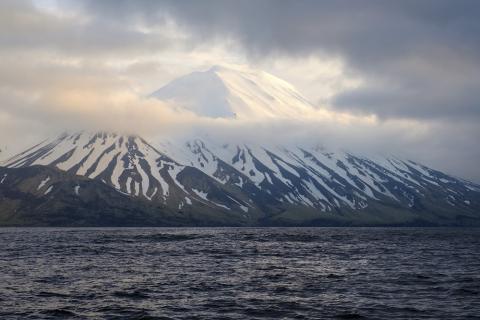
A second volcano in remote Alaska is experiencing elevated earthquake activity this week, signaling an increased potential for eruption, officials said.
Earthquake activity near Takawangha Volcano increased over the past 48 hours and are continuing, Alaska Volcano Observatory officials said in a news release Thursday.
That volcano is west of Anchorage in the western Aleutian islands and about 5 miles (8 kilometers) from Tanaga Volcano, which scientists said earlier this week had seen intensified earthquake activity.
The Alaska Volcano Observatory raised the alert level to advisory status for Tanaga Volcano late Tuesday after the quakes became vigorous.
The observatory on Thursday raised the alert level to watch status for Takawangha Volcano.
Analysts at the observatory continue to monitor the situation closely. Up to several earthquakes per minute are occurring under Tanaga Island, where both volcanoes are located, the observatory said. The largest quake over the previous 24 hours was a magnitude 3.9 located under Tanaga Volcano.
No eruptive activity or signs of unrest was detected in satellite or other monitoring data.
The island is about 1,250 miles (2,012 kilometers) southwest of Anchorage. There are no communities there, but Adak, a city of about 170 people on another island, is about 65 miles (105 kilometers) away and could see ashfall.
If one of the volcanoes were to erupt, it could be a problem for aircraft. The Aleutians are below the routes that jets fly between North America and Asia. Volcanic ash is angular and sharp and can cause airplane engines to shut down. Past eruptions had both ash clouds and viscous lava that moves slowly, much like what happened at Mount St. Helens in Washington state in 1980.
No historical eruptions are known from Takawangha but field work shows recent eruptions have occurred and its possible historic eruptions attributed to Tanaga may instead have come from Takawangha, according to scientists.
The last eruption from Tanaga Volcano was in 1914.












